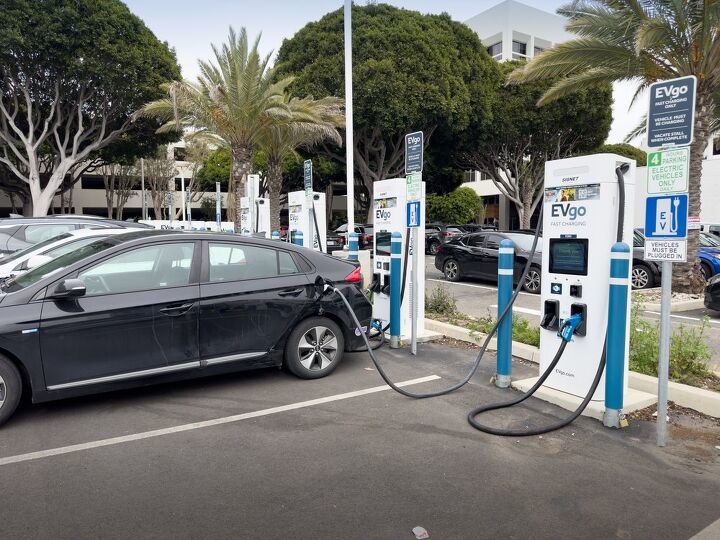Eating, Shopping, Charging: The New Normal for EV Owners, Says Survey
A recent survey conducted by FLO, a prominent North American electric vehicle (EV) charging network and smart charging solutions provider, has shed light on the preferences and behaviors of EV drivers, particularly regarding their charging habits. FLO's insights come from feedback collected from nearly 40,000 EV users across the United States and Canada, offering a comprehensive look at how EV drivers approach charging, especially for extended travel.
Fast Chargers: A Necessity for Long Trips
A significant portion of EV drivers, with 42 percent of surveyed individuals, reported using DC fast chargers at least once a month. Furthermore, 60 percent of respondents rely on these fast chargers for longer or multi-city journeys, underscoring the importance of these chargers in facilitating extended travel for EV owners.
Activities During Charging
Charging time is an opportunity for drivers to engage in various activities, with 51 percent utilizing on-site amenities while waiting. The survey revealed a strong preference for dining or purchasing refreshments, with 60 percent of respondents choosing to eat during their charging time. Meanwhile, 19 percent take advantage of this time to visit nearby retail stores for shopping, indicating that charging stations are becoming hubs of activity rather than just utility locations.
The Need for Reliable Public Charging Infrastructure
The findings also highlighted a gap in home charging availability, with 29 percent of EV owners lacking a home charging station. This fact emphasizes the necessity for a dependable public charging infrastructure to support EV owners without private charging options.
A Diverse Charging Ecosystem
EV drivers demonstrate varied charging practices, with 35 percent primarily using Level 2 stations and 27 percent favoring DC fast charging stations. An additional 31 percent utilize a mix of both types. This diversity points to the need for a versatile charging network that caters to different charging needs, whether for quick recharges or longer stays.
EV Driving Patterns
Most EV owners stick to local travel, with Canadian and American respondents reporting weekly distances that easily fall within the range of a single overnight charge. This pattern indicates that, for many, the current charging infrastructure and vehicle capabilities meet their regular transportation needs.
Louis Tremblay, President and CEO of FLO, highlighted the survey's role in informing the expansion of FLO's charging network, designed to enhance the charging experience for EV drivers by ensuring access to charging at various locations, including work, home, or on the road. The survey's outcomes are guiding the deployment of the FLO Ultra charger, a high-power, dual-port charger capable of delivering up to 320 kW of power, promising most new EVs an 80 percent charge in just 15 minutes.
This initiative by FLO not only promises to expand the accessibility of fast charging across North America but also to integrate charging stations into businesses, providing a valuable amenity to customers without the associated costs and logistical challenges of charger ownership.
This article was co-written using AI and was then heavily edited and optimized by our editorial team.
More by TTAC Staff
Latest Car Reviews
Read moreLatest Product Reviews
Read moreRecent Comments
- Kjhkjlhkjhkljh kljhjkhjklhkjh WHAT !?
- Jeff Matt--I think this is a good move for Mitsubishi to expand their presence with satellite dealers. I had a 85 MItsubishi Mighty Max and my sister had a 83 MItsubishi Starion. MItsubishi needs to add a compact pickup to compete with the Maverick and the Santa Cruz but offer it for less. A smaller more affordable truck will sell. I believe MItsubishi should still offer an inexpensive subcompact like the Mirage it will sell in a slowing car market with high msrps. Yes I know the Mirage is probably going to be canceled but I believe in these times it is a mistake and they should reconsider cancelling the Mirage. Toyota is having problems selling the new redesigned Tacomas and Tundras with the turbo 4s and 6s. Most Tacomas have MSRPs of well over 40k. There is room for MItsubishi to grow their market share with more affordable vehicles. I am not saying Mitsubishi is going to overtake Toyota, Honda, or Nissan but they should take advantage of the more affordable market segment that these companies for the most part have abandoned. MItsubishi doesn't have to be the biggest just increase sales and become more profitable.
- Cprescott More hideous garbage.
- Jalop1991 Mitsubishi is planning dealer expansion? What, the dealer will be adding a customer-only bathroom?
- Kwik_Shift_Pro4X [list][*] Outlander[/*][*] [url=https://www.mitsubishi-motors.ca/en/vehicles/outlander-phev?_gl=1*j13hn5*_up*MQ..&gclid=Cj0KCQjw0ruyBhDuARIsANSZ3wqcN5nA2aMvSGqloeS9xR0bOUYwfyddekyYgnmfm6cqP4Eg0MUqBUIaAqc2EALw_wcB&gclsrc=aw.ds]Outlander PHEV[/url][/*][*] Eclipse Cross[/*][*] RVR[/*][*] Mirage[/*][/list]This is all in Canada for 2024. How do they survive?


































Comments
Join the conversation